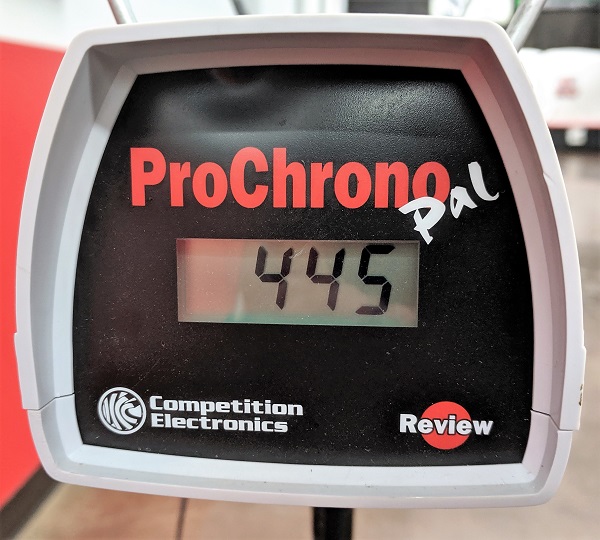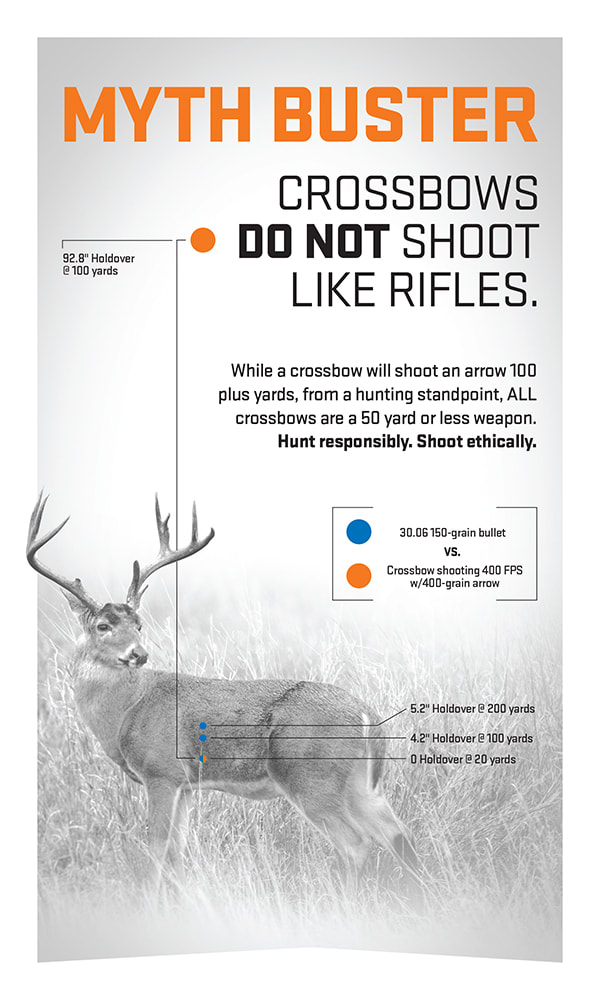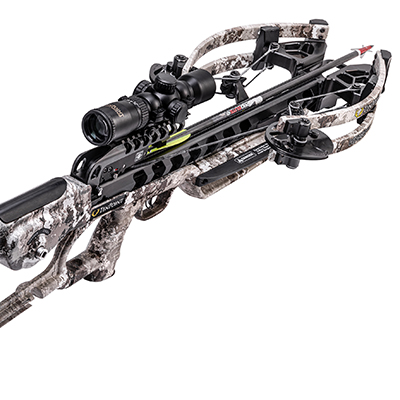Each year, I work at several different hunting and outdoors shows across the country educating consumers on the latest crossbow technology available on the market. Recently, I have noticed many folks asking me the same question each time I give an overview of the specifications of crossbows that shoot “up to” speeds of 400 feet-per-second or greater. The question is usually framed something like, “So, how much farther can I shoot a deer with this crossbow as compared to my older one?”

This question is remarkable because it lays bare a common misconception held by many consumers in the current hunting crossbow marketplace: that a crossbow which can shoot higher speeds enables you to take shots while hunting at farther distances than you could with a slower crossbow manufactured in the past. While this way of thinking about high-performance crossbows may seem logical, it does not account for factors like field conditions, ethical hunting responsibilities, or the advantages gained from shooting heavier crossbow arrows over lighter ones. Ultimately, the real advantage of shooting a high-performance hunting crossbow is not that you can “shoot farther” at an animal, but that you can shoot a heavier arrow faster to generate a higher level of kinetic energy.

Attempting a long-range crossbow shot at an animal is not a good idea for several reasons. First, the farther away from an animal you are, the less chance you will see an obstruction that your arrow could strike, altering its trajectory and sending it off-course resulting in a bad hit. A crossbow arrow can easily be diverted from its target by even the slightest glance off an object. Second, arrows drop fast at extremely long distances — like 100 yards. For instance, a 400-grain arrow that travels at 400 feet-per-second will drop around 93 inches to hit a target at 100 yards! Third, the wind can push crossbow arrows well off-course, causing your arrow to hit inches or even feet off-the-mark, depending on wind speed, at extreme distances. Fourth, from the moment your arrow leaves your crossbow until it hits your target, it slows down and loses kinetic energy. When you take a shot at a distance greater than 50 yards, your arrow may have lost enough speed and kinetic energy that it no longer has the penetration power that you think it does. Finally, even if your crossbow shoots your hunting arrow faster than 400 feet-per-second, there is still ample time left for an animal to “jump the string” or react to the sound of your shot at a long distance. For example, if your crossbow shoots your hunting arrow at 450 feet-per-second, the animal still hears your shot nearly a half-second prior to the arrow’s arrival 100-yards away.
As an ethical hunter, you have assumed the responsibility of taking the shot on an animal that you feel will yield the greatest chances for expiration and recovery. In other words, it’s your responsibility to take the shot that has the highest probability for success. Hence, the closer the shot, the less chance that it can be affected by an obstruction, the drop in the arrow’s trajectory, a loss of speed and energy over distance, wind drift, or the animal jumping the string. The farther away your shot is, the greater the chances that one of these factors will play a role in diverting your arrow from the intended point-of-impact and lower your harvest chances. When you shoot a high-performance crossbow, you still must contend with these factors that can influence the accuracy of your shot and reduce your chances for harvest and recovery.

When it comes to crossbow hunting, your focus should be on the shot placement of your arrow and the amount of potential it has to totally pass-through the animal. A well-placed arrow that totally passes through will inflict more lethal damage than an arrow that only penetrates a few inches. A way of measuring this “pass-through potential” is to consider how much energy the arrow has when it leaves your crossbow. A heavier arrow shot slightly more slowly than a lighter arrow will always have a greater amount of kinetic energy than the lighter arrow that shoots more quickly. Heavier crossbow arrows also tend to fly more accurately and produce tighter down-field groups. The greater amount of kinetic energy an arrow carries with it yields a greater chance the arrow will totally pass-through. You are far more likely to harvest and recover an animal when your arrow accurately hits its mark and carries with it enough energy for the broadhead to inflict serious damage while achieving a total pass-through. Hence, the real benefit of shooting a high-performance crossbow is that it allows you to shoot heavier crossbow arrows with greater accuracy potential.
— PAID PARTNER CONTENT. This content is brought to you by a D&DH advertising sponsor.


